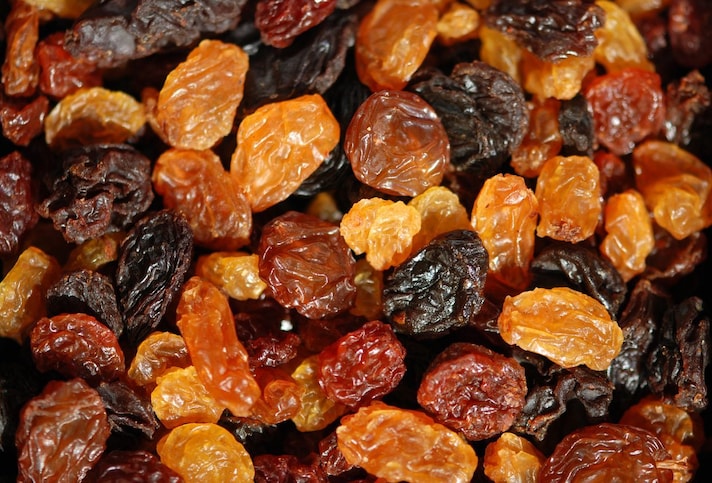
To immediately understand the substantial difference between raisins and sultanas, it's enough to say that the former refers to a specific product, known as a sultana, which falls within the broad category of dried fruit, while the latter refers to a variety of table grape that may or may not be intended for drying. Why do they tend to be confused? Simple, because sultanas are very often transformed into the more common raisin in cooking, becoming, for example, a key ingredient in panettone, which requires this type in its dough, in granola, and in other sweet and savory preparations characterized by a sweet and sour note. Let's explore both, to eliminate further confusion.
What Are Raisins?
Let's start with the most generic food: raisins, also known as sultanas, are a term that encompasses all those grapes that have been subjected to a dehydration process, therefore partially deprived of water, which allows them to be preserved for long periods, as well as providing a higher concentration of sugars: it is a particularly caloric and energetic food, to be consumed in moderation, known since ancient times and used in typical recipes throughout the Mediterranean basin and beyond. What is the raw material of origin? Various varieties of aromatic grapes, white or black, which are well suited to drying, such as the Zibibbo grape, the same one used to make wine, the Corinto Nero grape, grown mainly in Greece and also present in the Aeolian Islands (in the past it was the only grape from which "passolina" was obtained, the term which means raisin in Sicilian) or the Malaga grape, typical of Andalusia (it is no coincidence that the famous ice cream is made from raisins). Traditionally, fresh grapes are dried slowly in the sun, which can also be done at home, while for large-scale production, industrial techniques are used, with mechanical (and not manual) drying in ventilated ovens at a controlled temperature.

What Are Sultanas?
In this case, we're talking about a variety of Vitis vinifera (the botanical term for common grape) that originates from Greece, Albania, Turkey, and Iran, and is now widely grown in Australia and the United States. It's called Thompson Seedless or Sultana and is characterized by small, fleshy, seedless berries, ranging from green to amber-yellow in color when fully ripe, falling into the category of white table grapes. It has a high carbohydrate content, which makes it particularly sweet. The name appears to come from the city of Soldania (now Sudak) in Crimea, once a thriving trading port with which the Maritime Republics of Venice and Genoa also had contact. Sultanas aren't primarily used as nibbles at the end of a meal, but as raisins —also called sultanas —and are used primarily in pastry making, precisely because of their natural sweetness.

The Main Differences Between Raisins and Sultanas
Often used synonymously, raisins and sultanas are not the same thing. Raisins are essentially a product category, an umbrella term that covers all dried grapes, while sultanas are a specific variety of white grape, with a high sugar content and a naturally sweet flavor. The differences lie in the raw material, with raisins coming from various sources and therefore taking on a variety of shades of color, from golden to purplish-brown, depending on whether the berry is black or white. Sultanas, moreover, are seedless, meaning they have no seeds and are more regular in appearance without the seeds. In short, all dried sultanas are raisins, but not all raisins are necessarily sultanas.
;Resize,width=767;)
